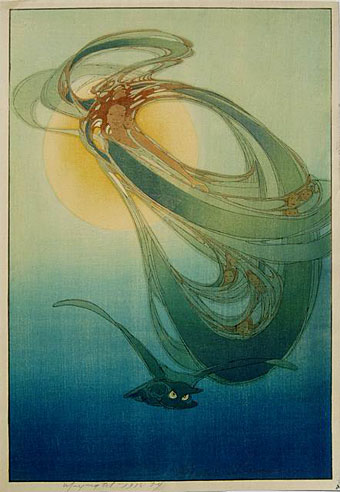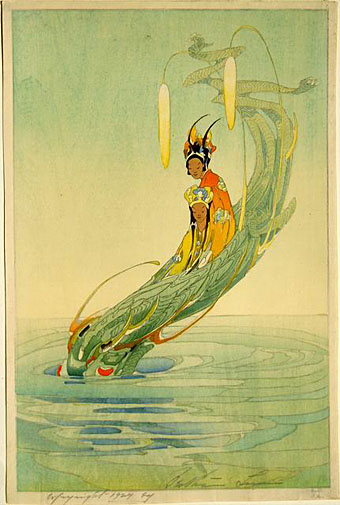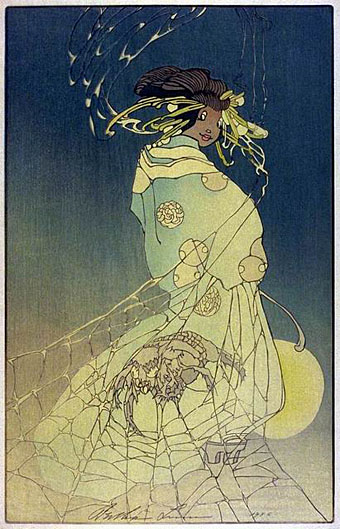Mother West Wind (1918).
The first thought which comes to mind when looking at these beautiful prints is to wonder why American artist Bertha Lum isn’t more well-known, she had a particularly fondness for fluid lines and swirling arabesques as in the example above. There is at least a wealth of detail about her career online, and her biography shows her to be far more than a careful pasticheur like Edmund Dulac and others. She travelled to Japan specially to learn printmaking, and her later works were produced in collaboration with Japanese artisans. No surprise to see she was attracted to the works of Lafcadio Hearn (1850–1904), another Westerner who did much to introduce the rest of the world to Japanese folklore—especially the ghost stories—during the late Victorian era.
The Dragon King and his Bride (1924).
• Four pages of catalogued works at Bertha-lum.org
• Biography page in English and a reference gallery
Spider Woman (1936).
Elsewhere on { feuilleton }
• The illustrators archive
Previously on { feuilleton }
• The Boy Who Drew Cats
• More Arabian Nights



